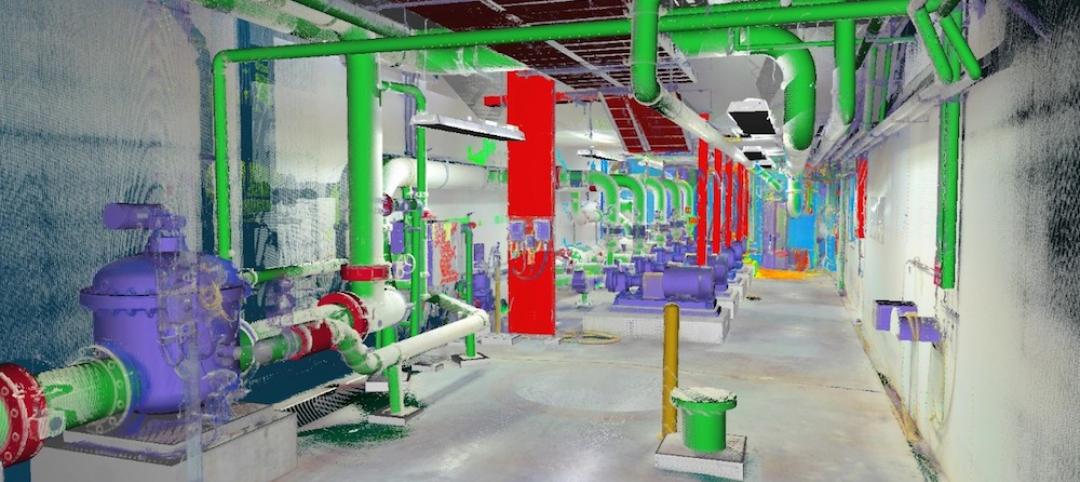This is the last article in a three-part series on digital transformation. Click here to read part one: What's driving the surge of digital transformation in AEC today? and part two: 4 ways AEC firms can benefit from digital transformation
In an era where digital transformation is no longer an option but a necessity for businesses, the Architecture, Engineering, and Construction (AEC) industry is no exception.
Regardless of your business size and type, digital solutions like document digitization, workflow automation software, AI-based analytics and integrations can significantly enhance efficiency, productivity, and competitiveness. They do this provided the journey is well-structured.
Successful implementation of a new strategy demands careful planning, thorough research, and a touch of common sense. Below, we’ll take a look at the steps that can provide a more comprehensive roadmap to guide you through the initial stages of digitalization.
9 Steps for Digital Transformation in Your Business
This list isn't set in stone and can differ depending on your company's goals and processes, but it's a framework you can at least start with.
1. Start with a Clear Strategy
Clarifying your business goals is a good first step. Identify the specific use cases which digitalization will deliver the most value to your organization. Consider not only broad objectives but also specific, measurable targets. For instance, instead of aiming for “business improvement,” a value hard to put in numbers, you may want to go for “cost reduction,” or “improvement of client communication.”
Defining these goals with precision will serve as a compass throughout your transformation process, ensuring that every action aligns with your core objectives.
2. Seek Expert Opinion at the Beginning
Look for guidance from experts or consultants with experience in digital transformation within the AEC sector. They can provide valuable recommendations to consider while building your strategy. Their insights will help you identify potential roadblocks, suggest innovative solutions, and provide you with a clearer path forward.
Don’t wait for issues to happen to start looking for insights. Early consultation can preempt challenges and help you develop a more effective strategy from the outset. It’s always better (and cheaper) to prevent than to fix.
3. Choose the Right Tool
The market today offers solutions for any business size, budget, and need. Tools like Fluix, Procore, Raken, and Autodesk are specifically designed to fit construction business needs and requirements. To see which one suits you most, do online research and check reviews on platforms like Capterra and G2. If your partners or clients already use similar software, ask for their feedback and reference.
Don’t be afraid of testing products and booking demos. A 15-minute call with a product representative will save you hours on setting the account on your own, and figuring out what feature solves your problems best.

4. Start with a Pilot Project
Start with smaller pilot projects to test your digital transformation initiatives. Pilot projects serve as the testing ground for your digital transformation initiatives. Initiate them with a focus on specific areas of your operations.
This phased introduction minimizes disruption to your overall workflow while offering a controlled environment to fine-tune the digital solutions. Once you’ve implemented several of them, gather feedback and adjust your approach accordingly.
5. Establish Baseline Measurement
Before implementing digital changes, establish a set measurement of your existing performance. This assessment should encompass not only quantitative metrics but also qualitative aspects, providing a holistic view of your business operations before the implementation of digital changes.
This will serve as a reference point for assessing the impact of the transformation. Understanding this baseline enables a comparative analysis, facilitating a clearer evaluation of the impact of your digital transformation.
6. Consider Legal Moments and Compliance
Evaluate the digital transformation in light of legal and ethical considerations. Ensure that the integration of digital solutions adheres to privacy regulations and industry-specific laws.
This evaluation should encompass not just data privacy but also ethical considerations, safeguarding your organization from potential risks associated with digital adoption. A compliance framework shields your business from potential legal implications, providing a secure foundation for your digital journey.
7. Take Care of Training
Ensure that your team has the necessary skills to implement and utilize the tool(s) you’ve chosen. Provide training and make sure everyone has the proper equipment (tablets, smartphones) to use it in the field.
Comprehensive training programs should equip your employees not only with technical skills but also with the adaptability needed for a smooth transition. This training should go beyond the desk, ensuring that your field teams are proficient in using the tools ondevices, empowering them for efficient on-site utilization.
The effectiveness of these tools is directly tied to your team's proficiency, making training an integral part of your digital transformation strategy.

8. Assign Responsibilities
If the structure of your company permits, assemble a cross-functional team with representatives from various departments to lead the effort. This team should include IT experts, project managers, and field team representatives.
Clearly defined roles and responsibilities streamline communication, ensuring that the implementation is cohesive and well-coordinated across different operational facets.
9. Set Measurable KPIs
Identify specific key performance indicators that will reflect the changes you intended to achieve. Choose indicators that are well measured in numbers.
While efficiency improvement is a goal, focus on measurable metrics like reduced project timelines, reporting time, downtimes, and agreement signing time. These numerical benchmarks provide a clearer understanding of the transformation's impact, facilitating precise analysis and informed decision-making throughout the process
Last Word
Get down to work: Start implementing things and stay consistent. Compare your performance with both your baseline and industry benchmarks to evaluate how you fare in relation to competitors and best practices. Calculate the return on investment (ROI) for your digital transformation by comparing the benefits gained against the costs incurred.
This ongoing assessment ensures that your digital transformation remains aligned with the evolving industry standards and best practices, continuously enhancing your business operations.
Starting transformation isn’t easy. But with a clear strategy and a plan of action, you can select the most suitable digital tools, test them with pilot projects, and establish a strong foundation with baseline measurements and legal compliance.
Furthermore, comprehensive training, a well-defined team, measurable KPIs, and continuous diligence in the implementation process ensure that you are on a path toward success.
By staying consistent and calculating the return on investment, your AEC business can not only thrive in the digital age but also set new standards of efficiency, productivity, and innovation.
RELATED:
Related Stories
AEC Tech | Mar 17, 2016
Managing risks with laser scanning gives AEC firms an edge
The more that clients demand the service, the easier it is to justify the cost of laser scanning equipment and software.
AEC Tech | Mar 15, 2016
Two to tango: Project Tango isn’t just for entertainment, it also has a wide range of possibilities relating to the professional world
Making things like augmented reality, precise measurements of indoor spaces, and indoor wayfinding possible, Google’s Project Tango has all the makings to become a useful and ubiquitous tool in the AEC market.
AEC Tech | Mar 10, 2016
Is the Internet of Things the key to smarter buildings and cities?
Experts say yes. But what’s needed is a point person who makes sure that sensing devices can “talk” to each other.
Multifamily Housing | Mar 10, 2016
Access and energy control app clicks with student housing developers and managers
Ease of installation is one of StratIS’s selling features.
AEC Tech | Mar 8, 2016
WiredScore offers developers competitive advantage in marketing
Designates best-in-class Internet connectivity.
Game Changers | Feb 5, 2016
London’s ’shadowless’ towers
Using advanced design computation, a design team demonstrates how to ‘erase’ a building’s shadows.
Game Changers | Feb 5, 2016
Asia’s modular miracle
A prefab construction company in China built a 57-story tower in 19 days. Here’s how they did it.
Game Changers | Feb 5, 2016
Tesla: Battery storage is not just about electric vehicles
With his $5 billion, 13.6 million-sf Gigafactory, Tesla’s Elon Musk seeks to change the economics of battery energy storage, forever.
BIM and Information Technology | Jan 27, 2016
Seeing double: Dassault Systèmes creating Virtual Singapore that mirrors the real world
The virtual city will be used to help predict the outcomes of and possible issues with various scenarios.
3D Printing | Jan 25, 2016
Architecture students create new method for 3D printing concrete
The team's Fossilized project allows for structures that are more varied and volumetric than other forms so far achieved.














